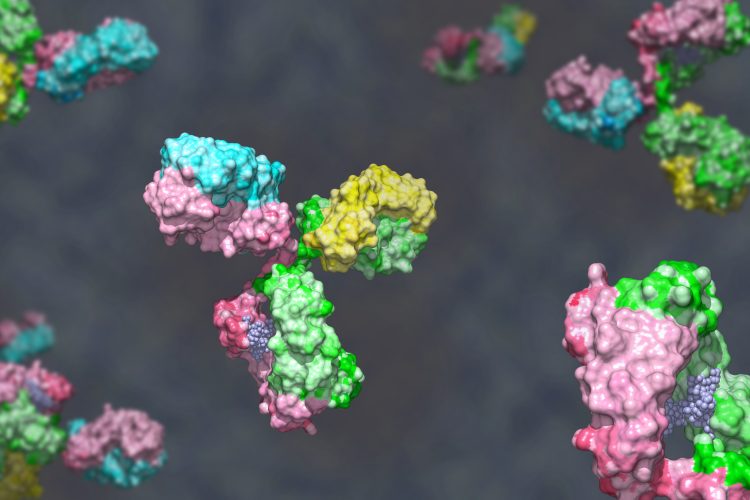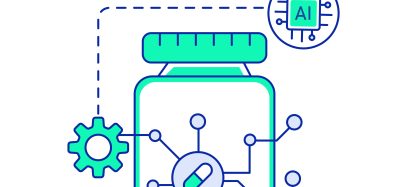Rethinking antibody discovery in the age of automation
Posted: 19 June 2025 | Drug Target Review | No comments yet
James Atwood, COO of Opentrons, shares how accessible lab automation is helping research teams tackle tighter budgets, faster timelines and complex discovery workflows.


As funding becomes increasingly scarce and timelines grow tighter, life science researchers are re-evaluating how they operate. James Atwood, Chief Operating Officer of lab robotics company Opentrons, believes automation is the leveller that could reshape scientific discovery from the ground up. With a background spanning biopharma leadership, genomics and technology commercialisation, Atwood is helping to drive a shift towards more efficient and flexible lab operations.
“This is how labs stay competitive in leaner times: by internalising key capabilities, scaling with automation and adapting faster than ever.”
Atwood’s message is clear: lab automation is no longer just for the elite few with seven-figure budgets and teams of engineers. It is becoming a necessity – and an accessible one.
Automation now plays a central role in discovery. From self-driving laboratories to real-time bioprocessing
This report explores how data-driven systems improve reproducibility, speed decisions and make scale achievable across research and development.
Inside the report:
- Advance discovery through miniaturised, high-throughput and animal-free systems
- Integrate AI, robotics and analytics to speed decision-making
- Streamline cell therapy and bioprocess QC for scale and compliance
- And more!
This report unlocks perspectives that show how automation is changing the scale and quality of discovery. The result is faster insight, stronger data and better science – access your free copy today
Automation for antibody discovery
One of the biggest challenges facing research labs today is balancing the need to accelerate discovery with limited resources. In antibody development, many teams rely on outsourcing to contract research organisations (CROs); yet while this affords access to specialist expertise, it may also introduce longer timelines, higher costs and reduced oversight.
“With government and grant funding tightening,” Atwood adds, “labs are under pressure to do more with less, especially in resource-intensive areas like antibody discovery.”
“With government and grant funding tightening, labs are under pressure to do more with less, especially in resource-intensive areas like antibody discovery.”
Many research teams are now expected to reach key milestones rapidly to secure continued funding. Outsourcing can support this, but often comes with trade-offs around speed, visibility and cost.
To address these pressures, Opentrons has developed the Flex neoSwitch Workstation – a system designed to support high-throughput antibody discovery within the lab. By automating key steps and integrating screening with expression workflows, it offers an alternative to fully outsourced models, especially for teams aiming to retain greater control over timelines and experimental design.
“Instead of waiting weeks for results, you can move from hit to purified candidate protein in just days.”
The neoSwitch system uses yeast surface display and allows researchers to toggle between display and secretion modes without subcloning or reformatting. This enables the same clone to be used for both screening and expression, reducing experimental cycle time. When integrated with broader automation tools, the platform helps streamline labour-intensive steps such as binder purification and next-generation sequencing (NGS) library preparation.
In real-world terms, this allows smaller or resource-constrained teams to run more complex campaigns in less time, without needing to expand headcount or rely entirely on external providers.
Building the foundations for AI in biology
While reducing turnaround times is one benefit of automation, Atwood highlights its broader impact – particularly in enabling the use of artificial intelligence in life sciences. For applications such as protein engineering, drug response prediction or synthetic pathway optimisation, high-quality datasets are essential.
“Training robust models for tasks like protein engineering, drug response prediction or pathway optimisation requires vast, high-quality datasets. These can’t be generated at the scale or consistency needed through manual workflows.”
Automation plays a crucial role in meeting that demand. A human researcher might run a few dozen experiments a day. A well-calibrated robotic system can run hundreds – with greater reproducibility and without the variability caused by fatigue or technique.
“Training robust models for tasks like protein engineering, drug response prediction or pathway optimisation requires vast, high-quality datasets.”
Opentrons has prioritised accessibility in its system design, creating modular, user-friendly platforms. This focus has allowed the company to serve not only large-scale industry users, but also academic groups and researchers in emerging markets who may otherwise lack access to advanced automation.
Still, barriers remain – particularly for smaller labs. “Affordability and access to technical expertise are two key barriers,” Atwood says. While the cost of automation has decreased, upfront investment still needs to be justified in grant-funded environments.
Just as significant is the skills gap. Many smaller teams do not have access to automation engineers or the training needed to confidently implement robotic workflows. This can create hesitation, even when automation would be beneficial.
To help address this, Opentrons launched the ‘Opentrons for Education’ programme. It offers discounted robotic platforms and curriculum-building support to undergraduate and postgraduate institutions. The goal is to integrate hands-on automation experience into teaching and early research environments.
“We’re partnering with educators to expand access to automation – to help institutions integrate hands-on lab automation into their teaching and research environments.”
This approach gives students practical experience with automation, while allowing institutions to grow research capabilities without increasing infrastructure or staffing proportionally.
Making automation a practical reality
Looking ahead, Atwood sees accessibility as central to automation’s role in improving global health equity. Reducing technical and financial barriers can empower labs in lower-resource settings to contribute to therapeutic discovery that reflects local health challenges.
“When automation is accessible, it levels the playing field and allows labs of all sizes and in all regions to participate in discovery and development.”
“When automation is accessible, it levels the playing field and allows labs of all sizes and in all regions to participate in discovery and development.”
Whether it involves enabling a university to run its first biologics programme or supporting a startup through its initial therapeutic screens, broader access to automation can lead to faster results and research that is more relevant to diverse populations.
In practical terms, automation helps labs manage their time more strategically. By handling routine and repetitive tasks, robotic systems allow scientists to focus on higher-level activities such as analysing data, refining protocols and planning future experiments.
“Researchers can test more hypotheses faster and with fewer resources. We’re getting to a place where automation can also adapt in real time based on results.”
This signals a future where lab workflows are not only more efficient, but more adaptive and ultimately, more impactful.


James Atwood is the Chief Operating Officer of Opentrons Labworks, where he works to make lab robotics more accessible and equitable.
Prior to his current position, he held various roles, including Senior Vice President of Biopharma at MOBILion Systems Inc, General Manager of Applied Genomics at PerkinElmer, Vice President of North American Sales and Marketing at Omni International, and General Manager at NuSep, which acquired Bioinquire, a company he co-founded.
James obtained his PhD in Analytical Chemistry from the University of Georgia. Throughout his career, he has accumulated experience in sales and product management within the life science sector. His areas of expertise include protein and nucleic acid sample preparation, mass spectrometry, proteomics, glycomics, analytical chemistry, and laboratory equipment sales.
Related topics
Antibody Discovery, Artificial Intelligence, Big Data, Biologics, Biopharmaceuticals, Drug Targets, Lab Automation, Next-Generation Sequencing (NGS), Protein Expression, Robotics, Target Validation
Related organisations
Opentrons Labworks








